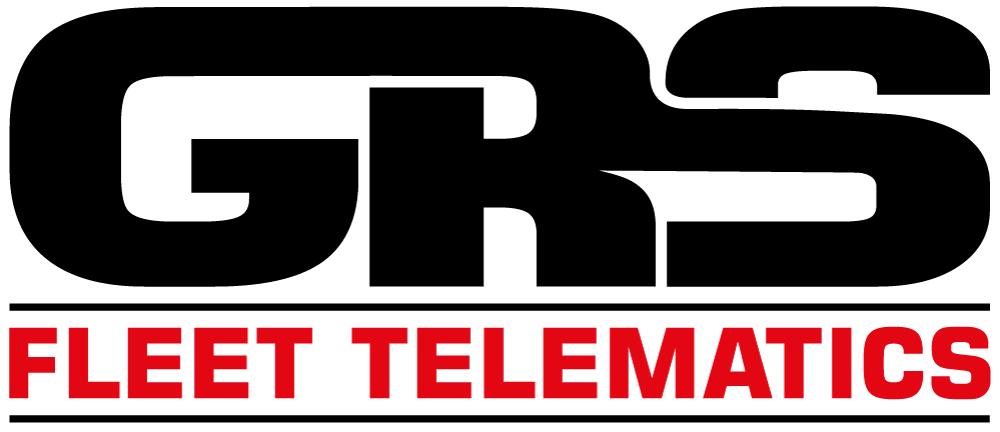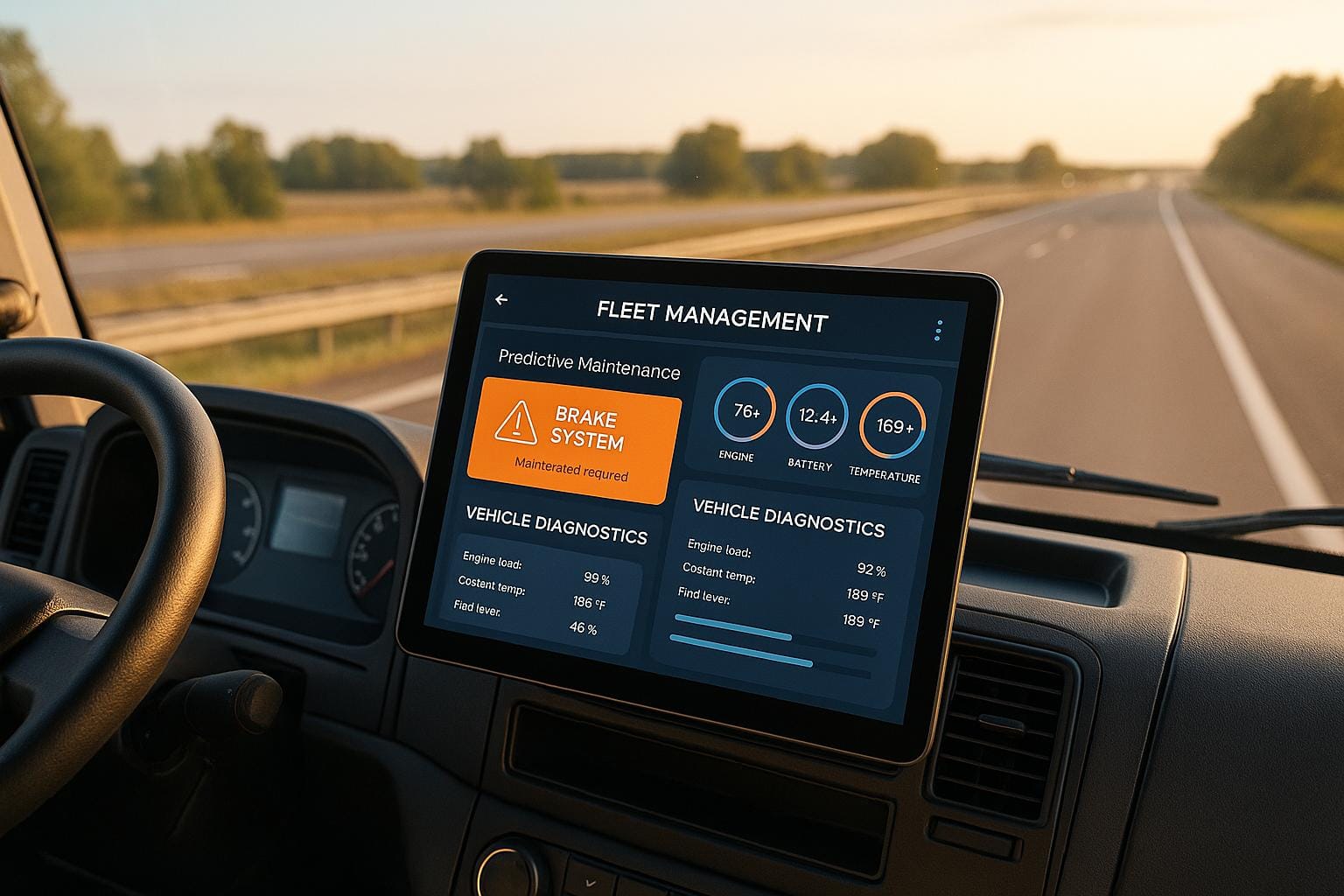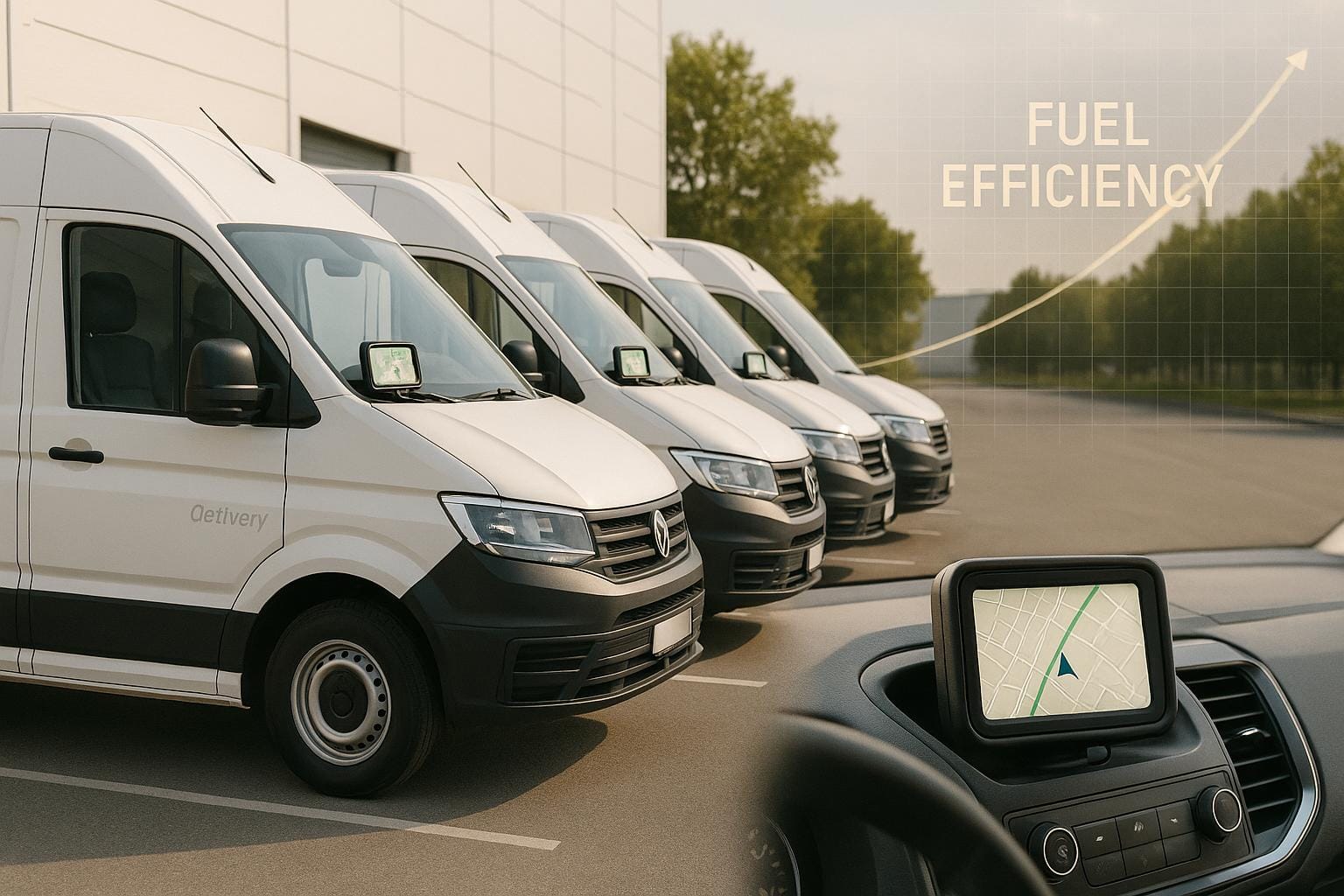Fleet management in 2025 is driven by advanced technologies like GPS, telematics, and data analytics, delivering real results:
- Cost Savings: 16% reduction in fuel costs, 22% lower accident-related expenses, and 16% cut in labour costs.
- Key Features: Real-time tracking, fuel monitoring, driver behaviour analysis, geofencing, and advanced security tools like remote immobilisation.
- Pricing: Starts at £7.99 per vehicle per month.
- Compliance: Systems simplify regulatory tasks like tracking driver hours, emissions, and maintenance.
How to integrate fleet systems effectively:
- Plan: Define goals, assess compatibility, and create an implementation timeline.
- Install: Test hardware, configure software, and train staff to minimise disruptions.
- Review: Monitor system performance, track fuel savings, and optimise operations.
With these tools, fleets in the UK and France have improved efficiency, cut fuel costs, and enhanced security while staying compliant with strict regulations.
How Does Fleet Maintenance Software Integrate With Existing ...
Understanding Fleet Management Integration
Fleet management integration brings together GPS, sensors, and data analytics into a unified system, turning raw data into practical insights. This process connects essential components to create an efficient and well-connected fleet management system.
Real-world examples highlight the value of integration. In Europe, 24% of fleets have successfully utilised integrated GPS tracking to improve electric vehicle usage, while 37% of fleet managers in Australia have used these systems to evaluate the suitability of vehicle electrification. These achievements are built on three key integration components, explained below.
Core Integration Elements
Modern fleet management integration depends on three main components working together to build an effective system:
| Component | Primary Function | Key Benefits |
|---|---|---|
| Telematics Hardware | Real-time vehicle monitoring and data collection | Cuts fuel consumption and tracks driver behaviour |
| Data Systems | Processing and analysing collected data | Supports data-driven decisions and improves operations |
| Security Features | Protecting fleet assets and data | Boosts vehicle security and safeguards data privacy |
These components deliver real results. For instance, three-quarters of fleet managers report that integrating in-cab video technology with other systems has improved driver safety and reduced incidents. Similarly, fleets using advanced GPS tracking have achieved a 13% drop in insurance premiums.
Integrated systems also simplify regulatory compliance by automating data collection for tasks like tracking driver hours, scheduling maintenance, and monitoring emissions. Real-time data transmission to central hubs allows fleet managers to make quick, informed decisions, adapting to changing conditions as they arise.
To achieve the best results from integration, fleet managers should:
- Identify operational needs: Tailor solutions to address specific challenges unique to the fleet.
- Plan the implementation: Account for timing, data transfer, and compatibility between systems.
- Monitor performance: Regularly track metrics to ensure data accuracy and system efficiency.
The benefits of integration are especially clear in managing electric vehicle (EV) fleets. In the U.S., 28% of fleet managers have used GPS tracking to identify and optimise potential EV routes. This shows how integrated systems can support the shift to greener fleet operations without sacrificing efficiency.
3 Phases of System Integration
Integrating a fleet system involves three key phases, each designed to improve performance and maximise return on investment. These steps build on earlier integration concepts, enhancing operational efficiency gradually.
1. Planning Your Integration
Start by evaluating your fleet's current operations and future requirements. Pay attention to these critical areas:
| Assessment Area | Key Considerations | Expected Outcomes |
|---|---|---|
| Operational Goals | Route efficiency, fuel consumption, maintenance schedules | Clear performance benchmarks |
| Technical Requirements | Hardware compatibility, data transfer needs | Defined system specifications |
| Implementation Timeline | Training plans, installation schedules | A structured project roadmap |
Choose a provider with a strong track record and reliable support to guide you through scoping, implementation, and maintenance. This initial planning ensures the solution fits your fleet's specific needs.
2. Setup and Installation
This phase focuses on implementing the system while keeping disruptions to a minimum. Collaboration between technical teams and fleet staff is crucial. Key steps include:
-
Hardware Installation
Begin with a pilot programme to test and refine the process before rolling out to the entire fleet. -
Software Configuration
Set up user accounts, dashboards, and alerts tailored to fleet requirements. Train staff to ensure they can use the system effectively. -
System Testing
Perform rigorous testing of all components, including real-time data transmission, alert systems, and reporting features. Fix any issues before deploying the system fleet-wide.
3. System Performance Review
Regular reviews help confirm the system is meeting fleet needs and highlight areas for improvement. Focus on these metrics:
| Metric Category | What to Monitor | Action Points |
|---|---|---|
| System Usage | Daily active users, feature use patterns | Address training needs and trends |
| Data Quality | Accuracy, completeness, timeliness | Improve data collection processes |
| Operational Impact | Fuel savings, route efficiency, safety scores | Adjust system settings as needed |
Gather feedback from both drivers and managers to fine-tune the system. Ongoing monitoring and periodic reviews make it easier to spot issues early, ensuring the system remains effective and widely adopted.
Main Features of 2025 Fleet Systems
Modern fleet management systems are reshaping how organisations handle their vehicles, bringing measurable gains in security, efficiency, and safety.
Vehicle Security Systems
Advanced dual-tracker technology combines a main unit with a hidden backup, reducing the risk of theft and improving recovery rates. Key security features include:
- Remote Immobilisation: Allows authorised users to disable the vehicle's engine via GPRS or SMS.
- Geofencing: Lets managers set virtual boundaries and receive instant alerts if a vehicle leaves the designated area.
- Jamming Detection: Activates protective measures when signal interference is detected.
- Driver ID: Uses unique fob authentication to ensure only approved personnel can start the vehicle.
These systems provide a strong defence against unauthorised access. But while security is critical, managing fuel consumption is just as important.
Fuel Usage Tracking
Telematics-based fuel management helps cut costs by addressing inefficiencies like idling and poor driving habits. Key focus areas include:
- Idle Time: Reducing idling can save up to 2.3 litres of fuel per hour.
- Driver Behaviour: Improving driving habits can increase fuel efficiency by up to 30%.
- Tyre Pressure: Proper tyre inflation helps maximise fuel economy.
- Route Optimisation: AI-powered tools can lower fuel costs by 5–9% through smarter route planning.
Driver Safety Tools
Driver safety is a top priority alongside security and fuel management. AI-driven monitoring systems provide real-time coaching to encourage safer driving. Results include up to a 50% drop in accidents, a 40% reduction in traffic violations, and a 5% boost in fuel efficiency.
Next, we’ll explore real-world examples of how these features are being used effectively.
UK and France Fleet Integration Results
Fleet management systems have improved efficiency and compliance for fleets in the UK and France. Building on the core features and integration strategies previously outlined, here’s a closer look at the practical outcomes achieved in these regions.
Price and Value
By integrating these systems, fleets gain access to cost-efficient solutions that include real-time tracking, driver behaviour analytics, fuel consumption monitoring, vehicle health diagnostics, and 24/7 technical support. With mobile app accessibility, these features are available to both small local businesses and larger fleets operating across borders, making advanced telematics an affordable option.
Meeting Legal Requirements
Integrated systems help fleets stay compliant with UK and EU laws. Key features include automatic tachograph data capture, walkaround checks aligned with DVSA standards, emissions tracking for Low Emission Zones, and GDPR-compliant data handling to ensure secure operations.
Fleet Performance Gains
Cloud-based fleet management tools, which made up 65% of the market share in 2022, are driving operational improvements. These systems support predictive maintenance, enhance fuel efficiency, address poor driving habits, and produce detailed performance reports. The result? Noticeable improvements in both driver and fuel efficiency across the board.
Fleet Integration Examples
Examples from actual use cases highlight how integrating fleet systems can improve security and reduce expenses.
Theft Prevention Results
A Danish dry-cleaning company managed to recover a stolen vehicle thanks to a Teltonika FMB020 OBD tracker. The tracker revealed the van had been used to transport stolen goods from a nearby hotel. After this incident, the business set up geofencing alerts to track vehicle movements outside working hours. This case highlights the importance of vehicle security, especially considering that 159 vehicles are stolen daily in the UK. Modern systems now offer features like GPS tracking, jamming detection, Bluetooth backups, remote immobilisation, and real-time movement alerts.
These security measures can also lead to significant cost savings.
Fuel Cost Reduction
Carlsberg’s fleet management system shows how integration can cut fuel expenses. Their 260-vehicle fleet saved 502,549 litres of fuel, reducing costs by £568,687. These results were achieved through monitoring driver behaviour, optimising routes, and tracking fuel usage in real time.
"Reducing mileage is one of the quickest ways to cut costs and carbon emissions." – Energy Saving Trust
According to the Energy Saving Trust, cutting annual mileage by just 10% for vehicles driving 12,000 business miles a year could save approximately £150 per vehicle in fuel costs.
Conclusion
Integrated fleet systems offer clear benefits in security, efficiency, and cost control. The numbers back it up: GPS fleet tracking can lead to a 16% cut in fuel costs, a 22% drop in accident-related expenses, and a 16% reduction in labour costs.
With 77% of fleet managers identifying rising costs as a top concern, these systems provide practical solutions. They enhance driver safety - reducing incidents and lowering insurance premiums by 13% - while improving operations through predictive maintenance and smarter routing. The impact is clear: up to 47% fewer unplanned breakdowns and a 10% decrease in fuel consumption.




